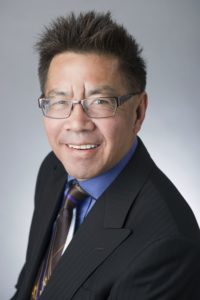Vision Statement
By Jon Jang
I soon began my piano study at age 19. After 18 months of study, I flew to New York and Ohio to audition for music schools and was accepted to all of them. I chose Oberlin where I would study with Dr. Wendell Logan (1940-2010), composer, saxophonist and Chair of the Afro American Music Department. He was a visionary leader, a deep thinker, and a courageous warrior with a huge heart. I was one of the few Asian Americans in the Conservatory and certainly one of the first to focus on African American music.
During the summer of 1978, the Conservatory was closed and I needed a piano to prepare for my senior recital. I posted an ad and received a response from a Black woman music teacher about to undergo surgery. She said I could practice at the Rust Methodist Church in exchange for serving as the piano accompanist at Sunday services. On my first day, the Black church congregation was shocked. However, after a while, I was accepted and the congregation crossed town to attend my senior recital, giving me a standing ovation. Dr. Logan explained to me: “If you give to the (Black) community, they will give back.”
In 1984 I made the record Are You Chinese or Charlie Chan? as a direct response to the 1982 murder of Vincent Chin in Detroit. It was the beginning of my process of documenting my experiences as an activist in the Asian American Movement. Similarly, in 1987, I composed, recorded, and toured Reparations Now! Concerto for Large Ensemble and Taiko, as part of the movement for the Japanese American reparations for the mass incarceration in World War II.
Traditions and artistic practices
The artistic process of my music making includes practices that are partly inherited, partly modified and partly invented. Since the late 1980s, my musical language experiments with transforming the traditions of Black music, Chinese folk songs and sometimes European classical music.
My work memorializes Black people who have been victims of police brutality and legal lynching; pays tributes to great activist leaders such as Malcolm X, Yuri Kochiyama and Frederick Douglass; promotes Black Asian solidarity; and celebrates Chinese American transnational family and activist history.
Accomplishments
Since the 1980s, my music continues to serve as a musical diary of Black, Asian and other people of color’s struggles against racism.
In 1990, I conceived a new work of poetry and music that premiered at Davies Symphony Hall entitled SenseUS with Max Roach and John Santos, poets Sonia Sanchez, Victor Hernandez Cruz, Genny Lim.
I continued to realize history making performances on the mainstages of major festivals as well. With my Pan Asian Arkestra I performed Reparations Now! in the 1990 Verona Jazz Festival and Tiananmen! on the mainstage of the 1994 Chicago Jazz Festival on the fifth anniversary of the pro-democracy movement.
In 2006 the Sacramento Philharmonic Orchestra and the Oakland East Bay Symphony commissioned and premiered Chinese American Symphony, a work that pays tribute to the Chinese immigrant workers who built the first transcontinental railroad in the United States.
My latest CD recording in 2018, The Pledge of Black Asian Allegiance, celebrates Black Asian Solidarity through Black Asian music hybridity. Featured is my work Why Did They Have to Shoot Him So Many Times? for Mario Woods, a 26 year old Black man shot 20 times by four San Francisco Police in 2015.
Vision
One of the lessons that I learned as a student is that life is a series of projects. I have realized big dreams such as the Chinese American Symphony and recording and touring with Max Roach. Going forward, one of my big dreams is to compose an opera based on the life and death of Vincent Chin.
I also am committed to what Horace Tapscott described as “passin’ the magic” to younger musicians, particularly of color.
